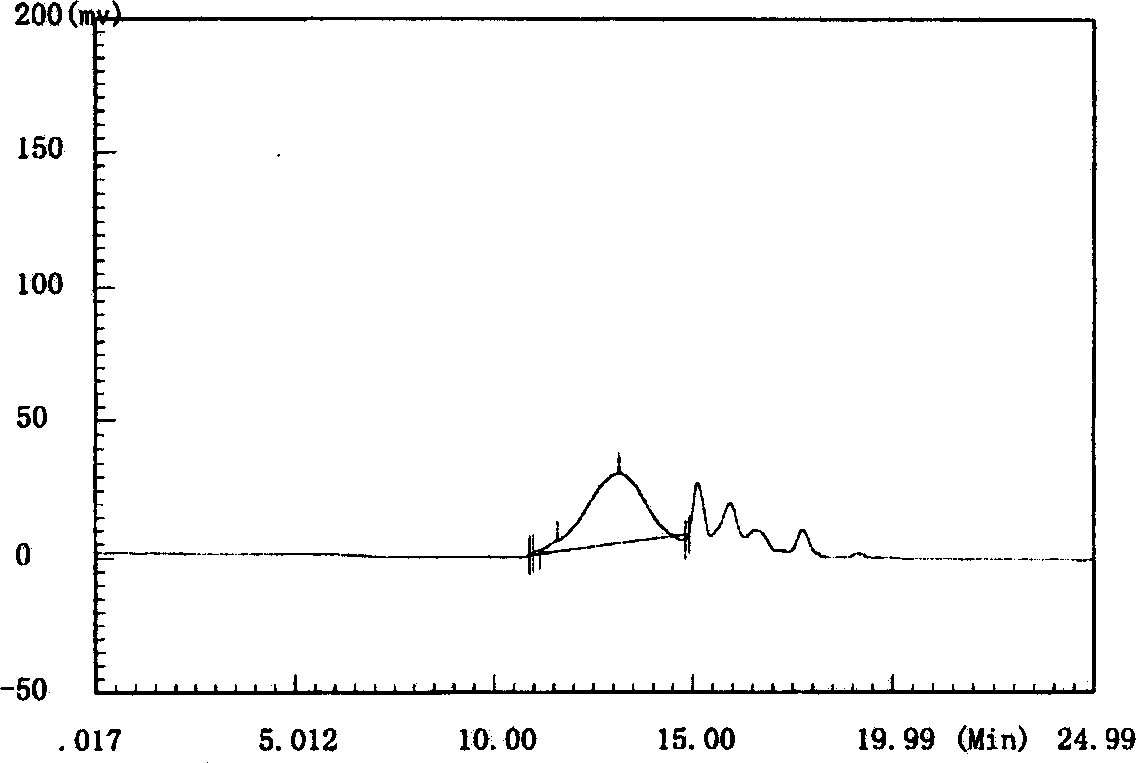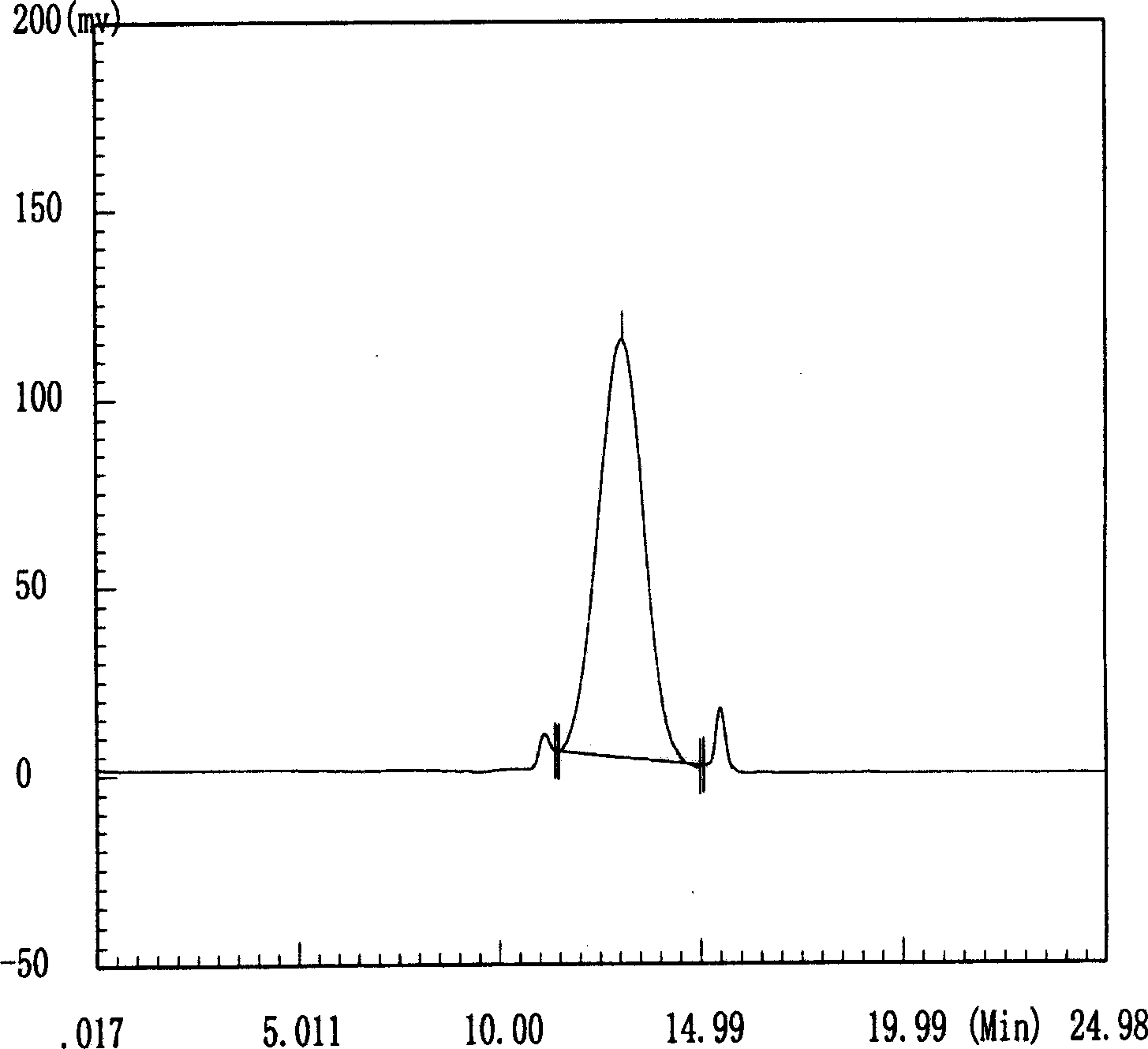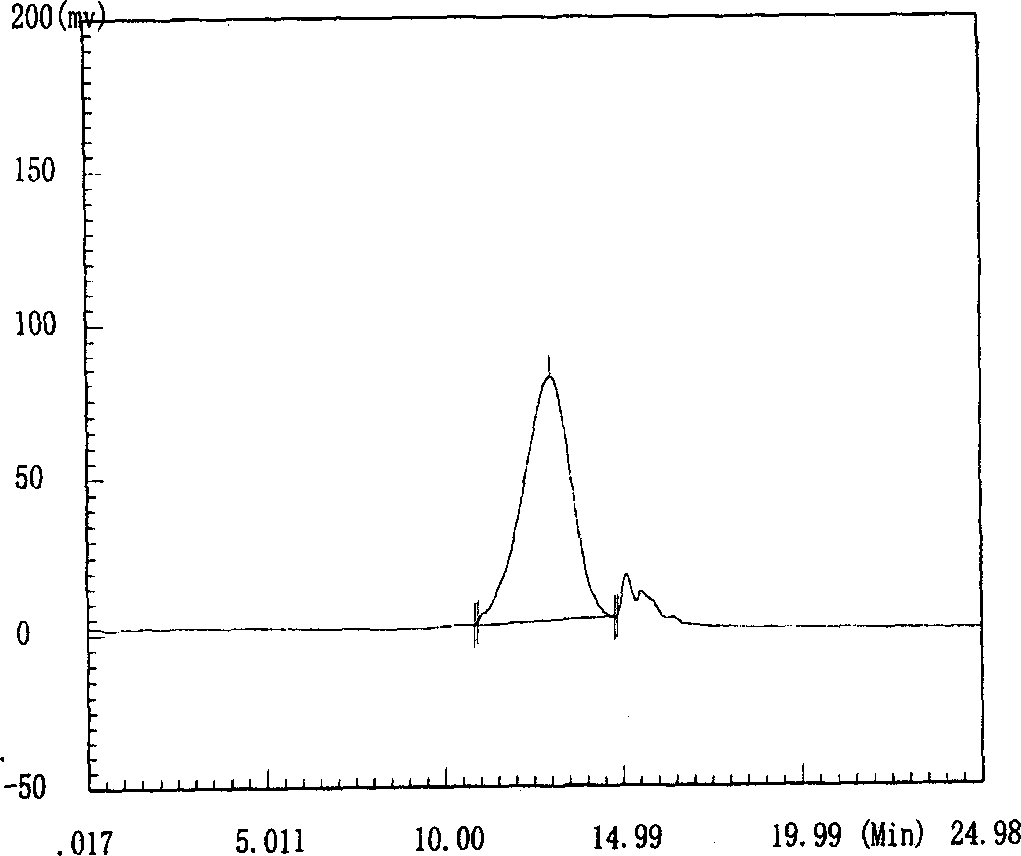Burdock inulin and its preparing method
A kind of technology of burdock inulin and inulin, applied in the field of burdock inulin and its preparation
- Summary
- Abstract
- Description
- Claims
- Application Information
AI Technical Summary
Problems solved by technology
Method used
Image
Examples
Embodiment 1
[0038] Take fresh burdock root, wash it with tap water, dry it naturally, cut it into thin slices with uniform size and thickness by hand or with a slicer, dry it in an oven at 60°C, and crush it mechanically to about 40 meshes to become dry burdock powder, which is weighed for later use.
[0039] Extract the burdock powder with 10 times the volume of hot water at a constant temperature of 80°C. Filter after each extraction, use a double-layer filter cloth for initial filtration, and then filter the filtrate with a Buchner funnel to completely separate the residue (burdock residue is used to extract dietary fiber) and extract, and combine the extract. Put the acidified (pH=4) macroporous adsorption resin (3250 resin or resin of other specifications) into a chromatographic column (Φ3.5×50cm or other specifications), equilibrate with deionized water, and extract The liquid flows through the resin bed at a certain flow rate to elute small molecular impurities and decolorize, rece...
Embodiment 2
[0041] Take fresh burdock root, wash it with tap water, dry it naturally, cut it into thin slices with uniform size and thickness manually or with a slicer, oven dry at 50°C, and mechanically crush it to about 40 meshes to become dry burdock powder, which is weighed for later use.
[0042] Extract the burdock powder with 15 times the volume of hot water at a constant temperature of 85°C. Filter after each extraction, use a double-layer filter cloth for initial filtration, and then filter the filtrate with a Buchner funnel to completely separate the residue (burdock residue is used to extract dietary fiber) and extract, and combine the extract. Put the acidified (pH=4) macroporous adsorption resin (3250 resin or resin of other specifications) into a chromatographic column (Φ3.5×50cm or other specifications), equilibrate with deionized water, and extract The liquid flows through the resin bed at a certain flow rate to elute small molecular impurities and decolorize, receive the ...
Embodiment 3
[0044] Take fresh burdock root, wash it with tap water, dry it naturally, cut it into thin slices of uniform size and thickness by hand or with a slicer, dry in an oven at 65°C, and crush it mechanically to about 40 meshes to become dry burdock powder, which is weighed for later use.
[0045] Extract the dried burdock powder at 80°C with 8 times the volume of hot water. Filter after each extraction, use a double-layer filter cloth for initial filtration, and then filter the filtrate with a Buchner funnel to completely separate the residue (burdock residue is used to extract dietary fiber) and extract, and combine the extract. Put the acidified (pH=4) macroporous adsorption resin (3250 resin or resin of other specifications) into a chromatographic column (Φ3.5×50cm or other specifications), equilibrate with deionized water, and extract The liquid flows through the resin bed at a certain flow rate to elute small molecular impurities and decolorize, receive the effluent, and use ...
PUM
 Login to View More
Login to View More Abstract
Description
Claims
Application Information
 Login to View More
Login to View More - R&D
- Intellectual Property
- Life Sciences
- Materials
- Tech Scout
- Unparalleled Data Quality
- Higher Quality Content
- 60% Fewer Hallucinations
Browse by: Latest US Patents, China's latest patents, Technical Efficacy Thesaurus, Application Domain, Technology Topic, Popular Technical Reports.
© 2025 PatSnap. All rights reserved.Legal|Privacy policy|Modern Slavery Act Transparency Statement|Sitemap|About US| Contact US: help@patsnap.com



